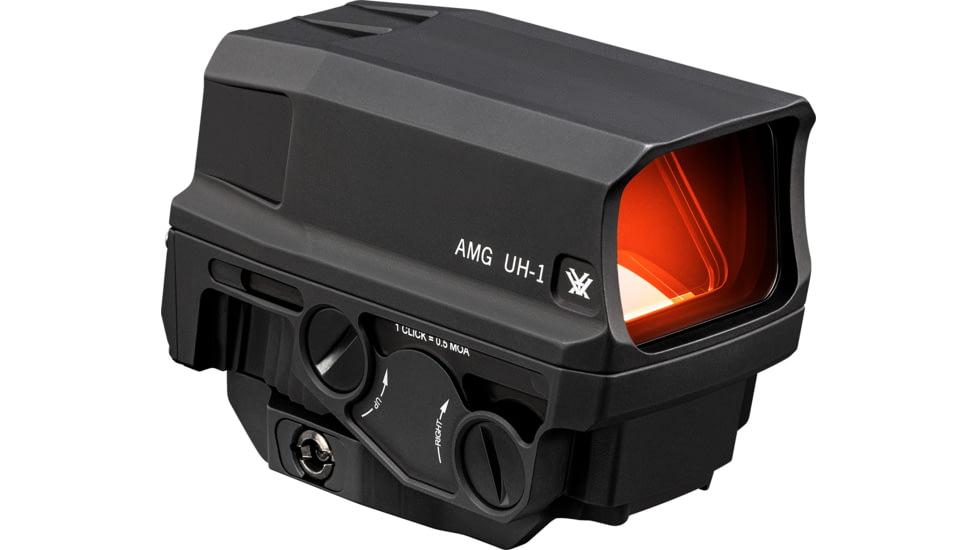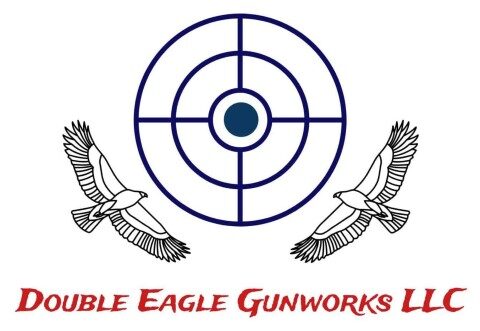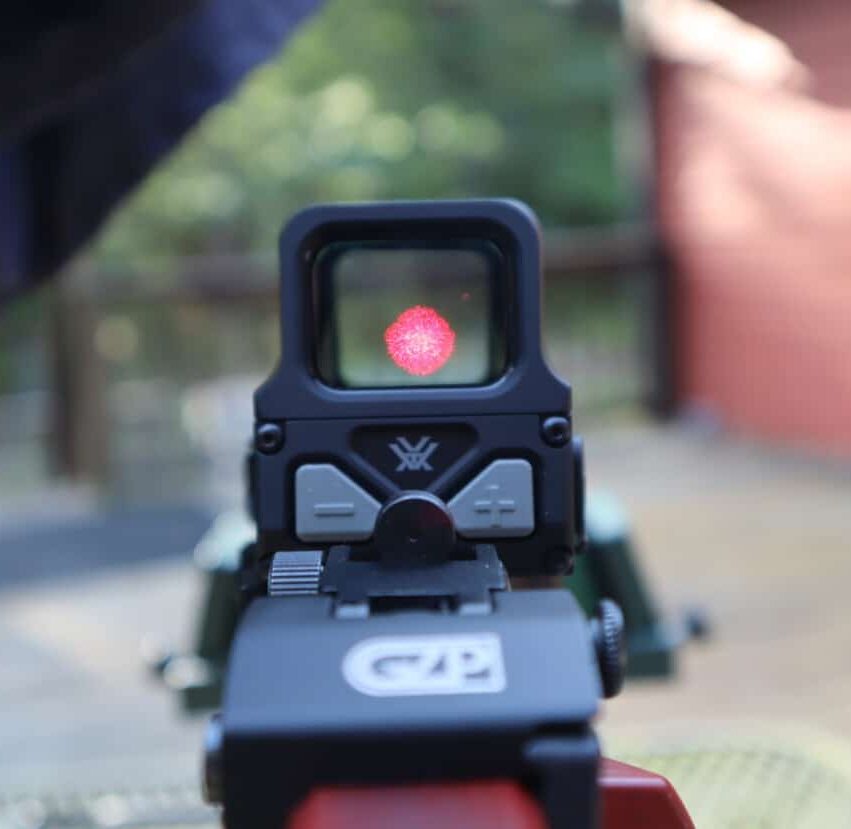Sometimes you need a little help getting your shot on target. Holographic sights provide that extra information to improve your accuracy.
A holographic sight rests on top of your rifle, in line with your eye, and projects an image called a reticle onto the viewing area. The reticle is typically a divided circle with a dot in the middle that helps you zero in on the exact placement of your shot and a triangle at the bottom for closer shots.
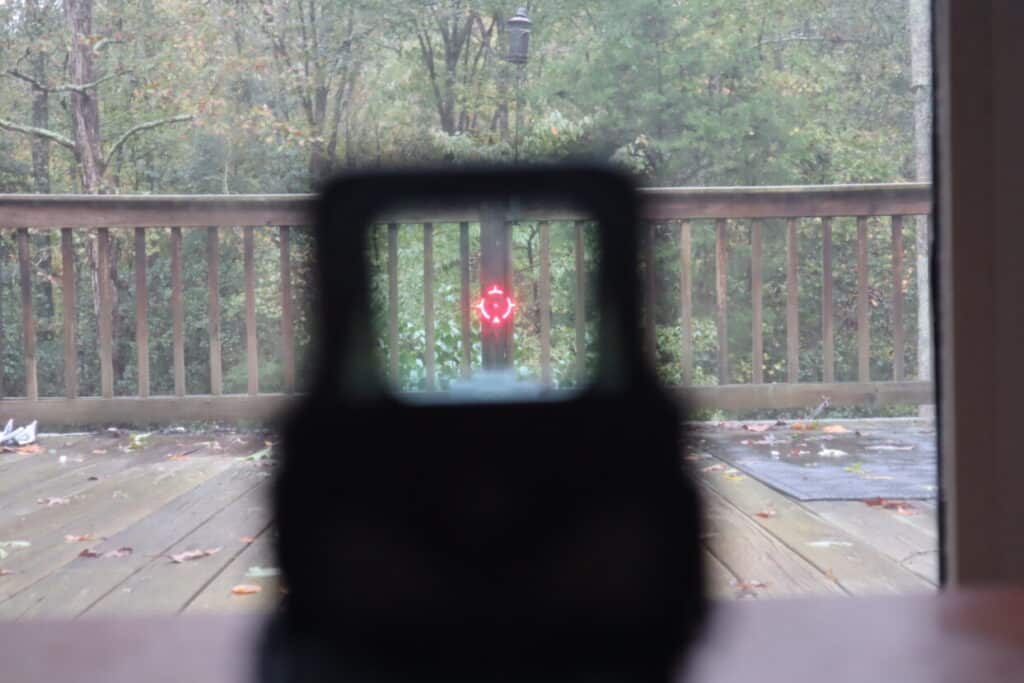
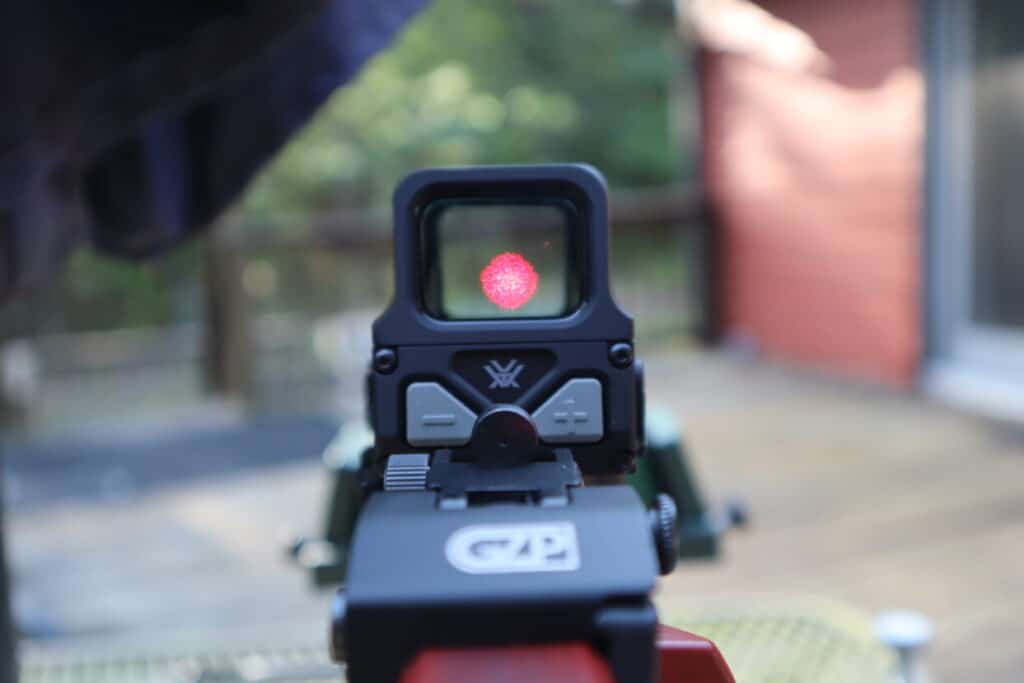
How A Holographic Sight Works
The holographic sight works using an emitter to project the hologram of the reticle onto the lens with a mirror and a laser. The hologram is projected on the back window (closest to your eye). The emitter is located inside the housing.
The front end does not project an image, and this eliminates the possibility that your target will be alerted by viewing the reticle. No image is projected onto the target; it is simply on the screen you are viewing. It is illuminated by a laser diode.
By contrast, most red dots are visible from the back end, thus giving away your position.
Here’s the technical explanation: the laser diode projects an image onto an angled mirror within the housing. This reflects upward to a collimating reflector, which reflects it back down to a holographic grating, which disperses it through the lens into the image that you see.
(Laser diodes directly convert energy into light. Collimating is another word for aligning. Holographic gratings involve two laser beams splitting and diffracting light into beams. For more on any of these topics, consult your local physicist.)
The holographic sight helps you get more specifically focused on your target without magnification. It is best used for closer targets within 50 yards, though you can use it up to about 200 yards.
It is designed with “close quarter battle” in mind: improved accuracy for home defense rather than sniping.
The Advantages of Holographic Sights
Holographic sights are more durable than red dot sights. Damaging the glass on a red dot sight destroys the sight because the mirrors and lenses won’t function properly.
A holographic sight still works if there is any glass left in place.
You can see the reticle on a holographic sight with both eyes open. This means you are not obligated to close one eye when shooting in order to use a holographic sight.
Eye relief is a very important advantage of a holographic sight. With a scope, you have to keep your eye within a few inches of the device to see the image. Given the heavy recoil of some rifles, this can put you in danger of a black eye after the shot.
You can stay well away from the holographic sight and still see the image clearly, so there is no danger of hitting yourself in the eye.
The Differences Between A Holographic Sight, A Red Dot Sight, and a Scope
A scope does not project a red dot. It may illuminate the field. It purpose is to magnify the image so that you can shoot farther away than you can see with your vision.
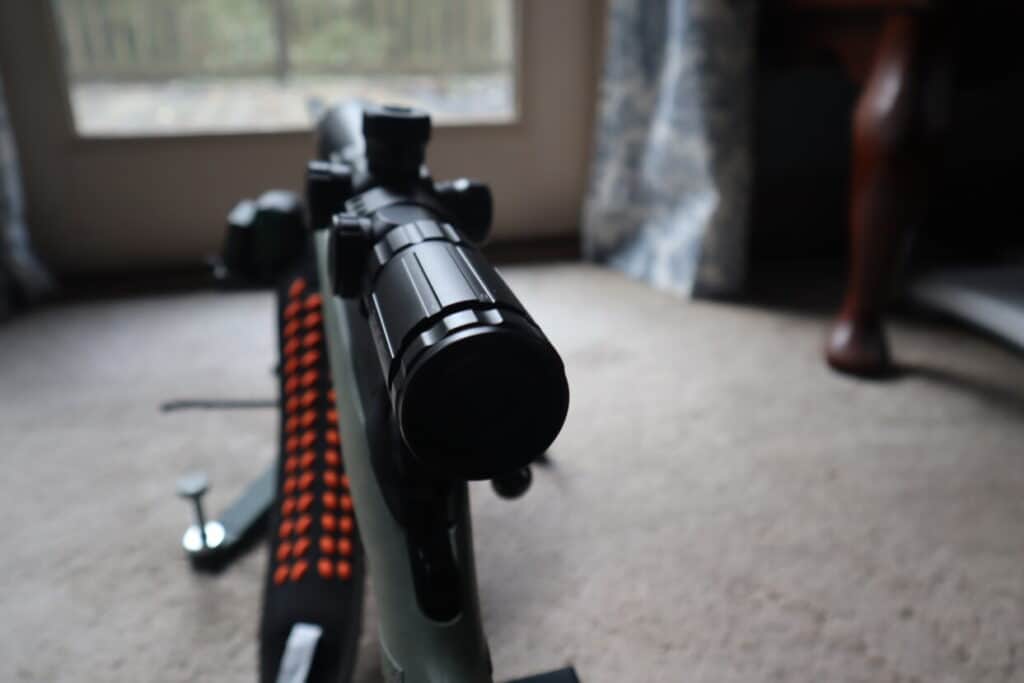
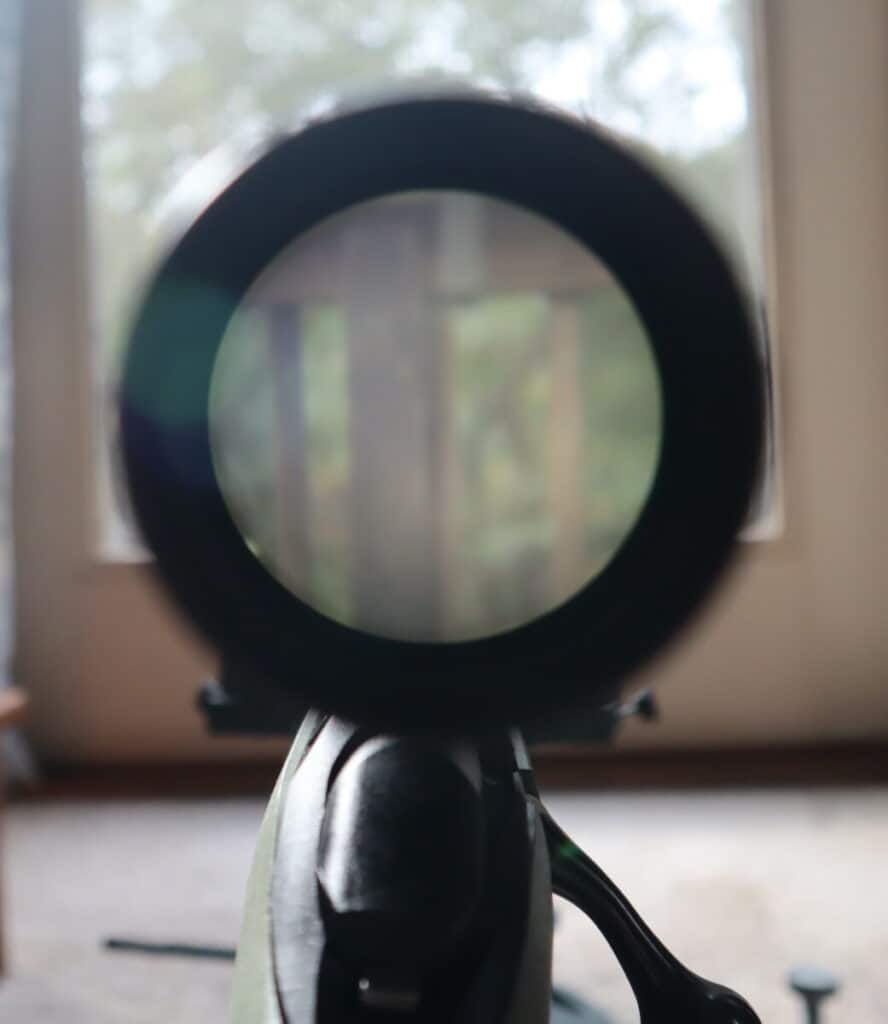
Scopes typically magnify 1.5X to 10X for a tactical rifle and 3-4X up to 30X for a hunting rifle.
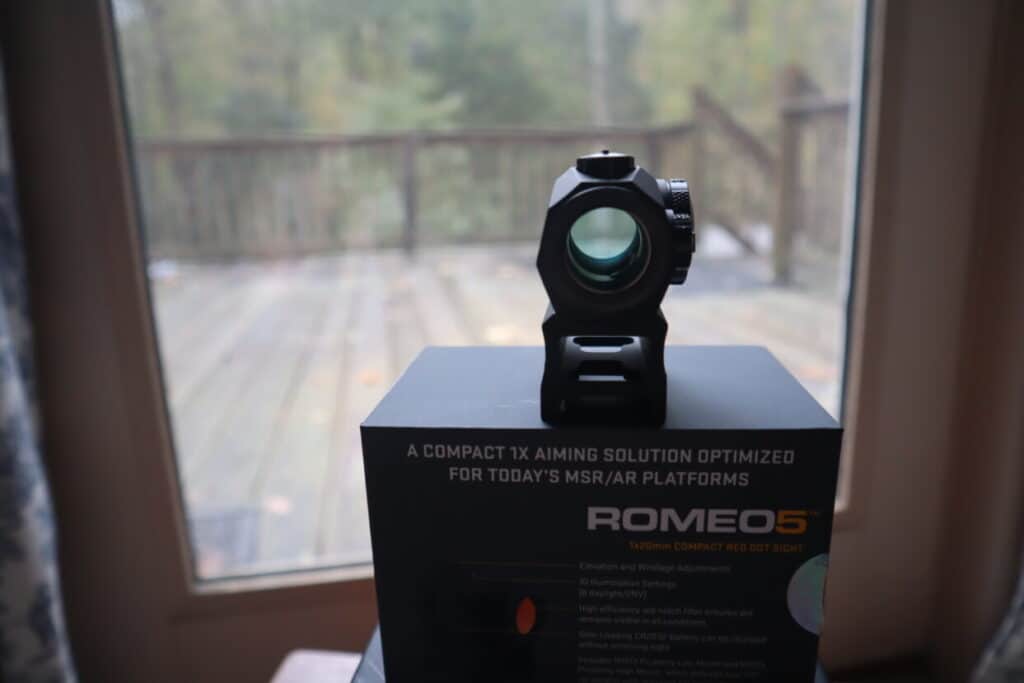
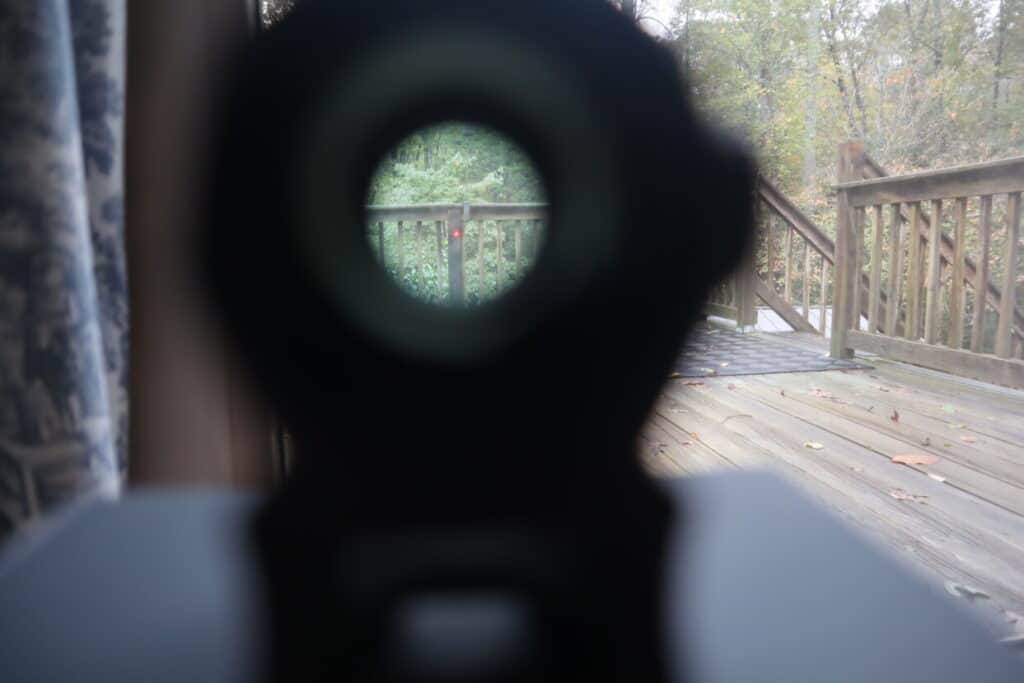
Red dot sights have an LED emitter that sends a signal to the coated front glass. This is reflected to your eye.
Red dot sights are smaller than holographic sights because the technology is simpler. The price also starts much smaller.
Because of their size, holographic sights are available for rifles but not for handguns. Red dot sights can be used on handguns.
Scopes are also too big for most handguns, but you can fit a small scope on a large revolver.
| Holographic | Red Dot | Scope | |
| Handgun | No | Yes | Yes |
| Rifle | Yes | Yes | Yes |
| Illumination | Yes | No | Yes |
| Light Visible From Front | No | Yes | No |
| Dot | No | Yes | No |
| Reticle | Yes | No | Yes |
| Magnification | No | Yes | Yes |
| Price | $250 to $1000 | $25 to $1000 | $100 to $15000 |
How to Use Holographic Sights
We have a Vortex Razor AMG UH-1, known colloquially as Huey, mounted on an AR-15.
The on/off buttons are on the back of the sight, which faces your eye once mounted on your rifle. To turn it on, you press either button. To turn it off, press both buttons at once. It will turn itself off automatically if you leave it on 14 hours.
To mount the Vortex Razor, you depress the lock button and swing the lever 90 degrees to the open position. You position the sight onto the rail and close the mount lever.
Use a coin or a flat head screwdriver to turn the knobs that adjust for windage and elevation. One click of either knob changes the point of aim 1/2 MOA when zeroing. One full rotation changes the point of aim 16.5 MOA–8.25″ at 50 yards or 16.5″ at 100 yards when zeroing.
(MOA stands for Minute of Angle. One MOA equals a one inch circle at 100 yards. This measurement gives you a more exact way to measure the trajectory of your bullet over long distances.)
The farther away you are from the target, the more you need to adjust for the increased drop of the bullet due to the arc-shaped trajectory of its course.
Windage is how much the bullet can be blown off course by the strength of the wind, left to right. Windage is a horizontal distance and elevation is a vertical distance. You use these numbers to adjust rifle sights.
After you shoot, note how far you missed dead center and in what direction. Adjust windage when the miss is to the left or right. Adjust elevation if the miss is above or below.
A spotter assisting a sniper will specify how many inches in what direction to adjust the sights to hit the target dead-on in order to overcome the challenges of windage and elevation.
How to Use the Reticle on a Holographic Sight
Use the center dot to zero the rifle and as the point of aim for targets 25 to 400 yards or meters away.
Use the triangle at the bottom of the reticle as your point of impact for close quarters distances of 10 yards or meters or less.
The rest of the circle helps you shoot a moving target if you estimate the width of the circle and the speed of the moving target. You shoot a moving target by anticipating where it will be by the time the bullet arrives.
Battery Life
Holographic sights don’t use a lot of power, so the batteries last a long time. The Vortex Razor uses one CR123A or the rechargeable LFP123A. The battery recharges via the micro USB port. Replace or recharge the battery if the reticle begins to pulse.
